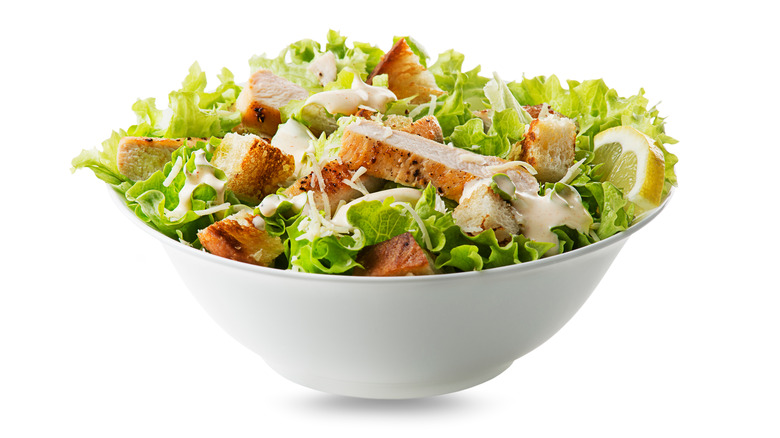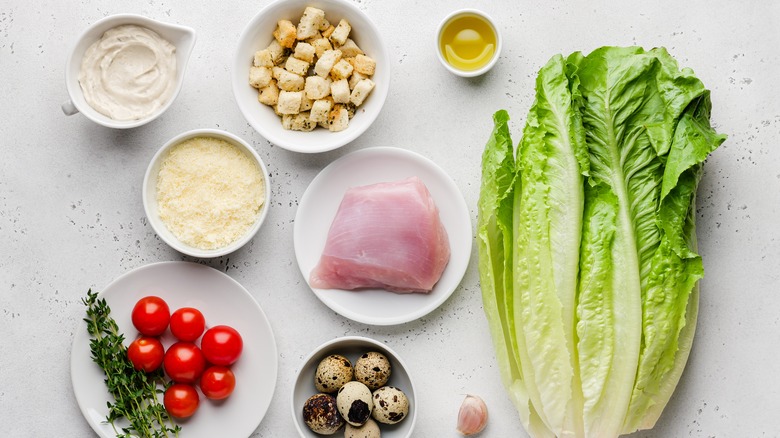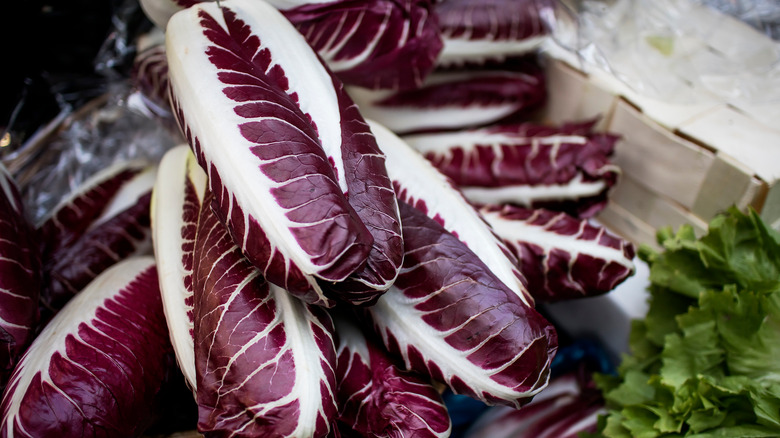Why It's Technically Incorrect To Eat Caesar Salad With A Fork
From the smallest wine bars to the biggest cafeterias, you'd be hard pressed not to find some form of Caesar salad on the menu. Usually a combination of chopped romaine lettuce, dressing, croutons, and parmesan cheese, it's simple to make and pairs well with almost any main course. Or, it can be an entree all on its own, with some protein such as grilled salmon or chicken on top.
However, while the dish is commonplace, some people may not know that the original Caesar salad was not served the way that most salads are served — as in with a fork. In fact, when it was first created in Mexico in the 1920s, it was a finger food, featuring whole leaves of dressed romaine lettuce (rather than chopped up pieces) that diners would pick up with their hands. Truthfully, romaine leaves are strong enough to carry the dressing and croutons, so skipping the fork and picking up a Caesar salad with fingers would be easy enough to do without it falling apart.
How to make the original finger food Caesar salad
To remake the original Caesar salad (also known as whole leaf Caesar salad or Tijuana Caesar salad for its city of origin) in finger food form, you'd need to find the freshest heads of romaine lettuce. Once you peel off the tough outer parts, then separate the leaves of the lettuce delicately so they don't tear or break. The goal of this step is to get as many whole leaves from the head of romaine as possible.
Another tip to make whole leaf Caesar salad is to use a large bowl so you can mix the leaves with the dressing (smaller bowls will cause the leaves to fold and break). You might want to use a metal bowl that has been chilled in the fridge for several hours, which will keep the lettuce fresh and cold when the salad is tossed. You could even grill romaine leaves for some extra crunch and structure for the ingredients you'll put inside.
For maximum authenticity, make your own dressing from scratch, and DIY the croutons with a sliced baguette. Then, toss the leaves with the dressing gently but thoroughly in the chilled bowl, and arrange the dressed leaves onto a plate. Place the croutons into each leaf and sprinkle Parmesan cheese over the tops. To serve at a group dinner, simply pass the platter around so each person can pick up a romaine piece with their hands.
More ways to use lettuce as a serving vessel
Romaine is not the only type of lettuce or leafy vegetable that can be used as a handheld vessel. You might have encountered iceberg lettuce leaves used for Asian-style lettuce cups, and you may have used leafy lettuces as a wrap for a low-carb burger. Vegetables such as endive and radicchio also work as sturdy edible vessels for finger foods and snacks.
For instance, radicchio leaves are very firm could work very well as carriers of salads that might be too heavy for romaine leaves, such as coleslaw or even for ceviche. Meanwhile, whole Belgian endive leaves have long served as vessels for creamy and a salad made of pungent blue cheese and crunchy nuts.
Finally, no matter what type of lettuce or greens you plan to use, one important tip is to make sure your leaves are always dry. After washing, wipe each leaf down with a paper towel and keep the leaves chilled in the fridge until you're ready to use to help prevent them from getting soggy too quickly and breaking when loaded with fillings.



